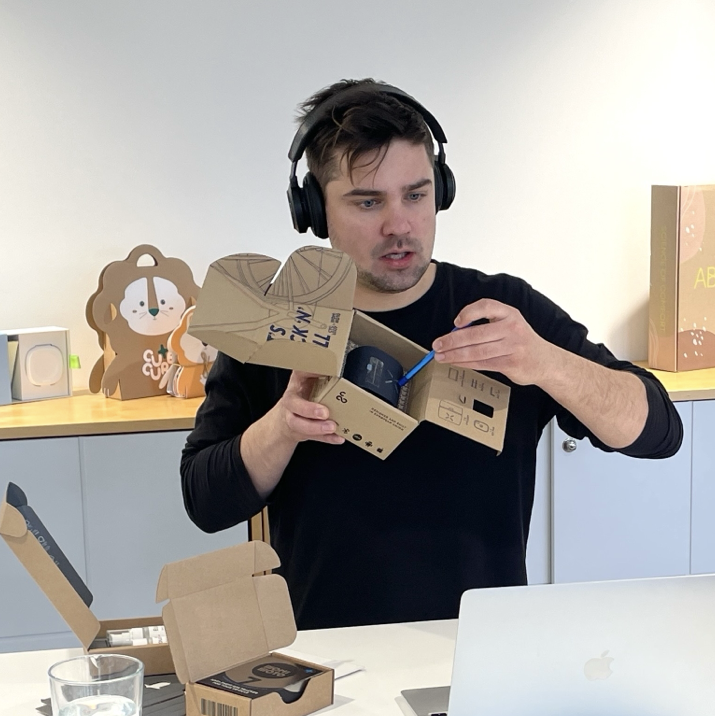Can Design Competitions Find Viable Sustainable Packaging Solutions?
Every year numerous packaging design competitions take place. Some award innovation and best practice demonstrated by brands and design firms. But some of the most interesting results come from competitions that ask entrants to design packaging to a brief. The constraints put upon entrants and environment of experimentation are what generate truly innovative new thinking about packaging designs and materials.
This is particularly the case when exploring how to make packaging more sustainable. But can environmentally friendly packaging solutions that work in the real world come from such competitions? Maximise Value of Packaging When you think about sustainable packaging you tend to concentrate on the materials used. But, as leading renewable materials company Stora Enso’s biannual Recreate Packaging competition shows, there is another angle to sustainable packaging. For example, packaging that has a secondary purpose ensures that the maximum usage possible from the materials and may prevent the need for another product entirely. We see this in the winners of Recreate Packaging 2021, which challenged entrants to create renewable and circular packaging.

The winning design by Guillermo Acevedo Beltran from Colombia was “flatBowl”. This innovative foodservice concept is a box which folds out into a bowl for the consumer to eat from. Second place went to Viktoriia Schmidt and Arthur Schmidt from Germany for their innovative cardboard shirt packaging design, which could be turned into a hanger for the product after purchase. Equally, packaging that helps stop consumers from wasting or throwing away products also has environmentally friendly benefits. This is the focus of this year’s Recreate Packaging competition, which has the theme of ‘wasted opportunity’ and asks designers to come up with packaging that tackles food waste – whether that’s through transport and storage, poor design, or consumer behavior. Push Beyond the Conceptual Packaging design competitions can sometimes skew towards the conceptual, rather than what is practical. But when it comes to sustainability, the most effective ideas are the ones that could also be viable at scale. Otherwise, brands won’t adopt them because of difficulties producing the necessary volumes and keeping costs affordable. The winners of the third annual Better With Less – Design Challenge, organised by Metsä Board – a European producer of premium fibre paperboards – clearly demonstrate this. The challenge asks participants to use recyclable materials from renewable sources to design packaging that decreases waste while improving the customer experience. The 2022-2023 competition awarded two companies joint first place. One was a design for kid’s headphones packaging by Kitty Ching in Australia, which reimagined the traditional headphones clamshell plastic packaging into something that could be used to store the product long-term.

The other was a cardboard protecting filler by designers Marcin Michalski, Monika Klimpel and Adrian Olejnik of Werner Kenkel Sp. z o.o. in Poland. Designed for protecting TVs and other electronics when transported, the concept replaces the polystyrene protection commonly used today with an easy to recycle alternative. Keeping the user in mind is key to creating sustainable designs that ensure the customer experience doesn’t suffer.

Get Industry Buy-In While cardboard is one of the more sustainable packaging materials, it unfortunately isn’t suitable for every packaging need. But that doesn’t mean that we don’t need to find alternatives. According to the Plastic Waste Makers Index 2023, there is more single-use plastic waste than ever before, totalling 139 million tonnes in 2021. And while there are companies trying to come up with alternatives, bringing them to market is a difficult challenge without industry support. This is where Tom Ford’s Plastic Innovation Prize, in partnership with non-profit Lonely Whale, differs from other competitions. Launched in 2020, this global competition to find and scale biologically degradable alternatives to traditional, thin-film plastic recently announced its winners.

First prize went to Sway, a US company developing seaweed-based, home-compostable replacements for thin-film plastic. In second place was Zerocircle, an India-based company using seaweed to make dissolvable plastic alternatives. London start-up Notpla took third place with a natural-membrane material that uses seaweed.

What’s different about the Plastic Innovation Prize is the amount of industry support behind it. Not only was the judging panel made up of industry leaders, brands, and scientists, but the materials went through a nine-month testing phase sponsored by Nike to really assess their credentials. This included field testing in Caribbean waters, in-lab testing (led by the New Materials Institute at the University of Georgia), and field testing in Pacific Northwest waters (led by the Seattle Aquarium). What’s more, an Early Adopter Coalition of major companies have all agreed to test finalist materials in their supply chains. This includes Tom Ford, Nike, Dell, Stella McCartney, HP, and MillerKnoll. This is all in addition to the $1.2 million prize purse designed to help winners scale their solutions.

Rather than being just nice ideas, these innovative materials have a chance to become a genuine part of industry supply chains. This can only be a good thing when it comes to shifting to more sustainable packaging. Design competitions can be a great way for material developers and designers to bring their sustainable ideas to a wider audience. But for competitions with the right industry partners, they can also be a launchpad for turning those ideas into viable packaging alternatives at a mass scale. By Jack Stratten, Head of Trends at retail trends consultancy Insider Trends.


